Biking in the Netherlands can seem daunting at first. Though, once you’ve taken off your training wheels, you’ll find that cycling in the lowlands can be super fun and simple! 🚲
Throughout the late 1960s, Dutch cycling culture wasn’t the (relatively) safe haven that it is today. There were countless road accidents — and pedestrians and cyclists were often the victims.
During the 1970s, there was a conscious decision to create a biking culture in the Netherlands. As a result, nowadays, the Dutch have managed to make cycling culture safe, fun, and accessible to both the Dutch and internationals who want to try it out.
How exactly? Let’s talk about it.
1. Create scenic bike paths
It doesn’t have to be all bricks and buildings! One thing that makes cycling so attractive in the Netherlands is the many scenic bike paths to glide through. The Dutch countryside is great for relaxing bike rides if you’re looking to cycle alongside some trees and greenery. 🌳
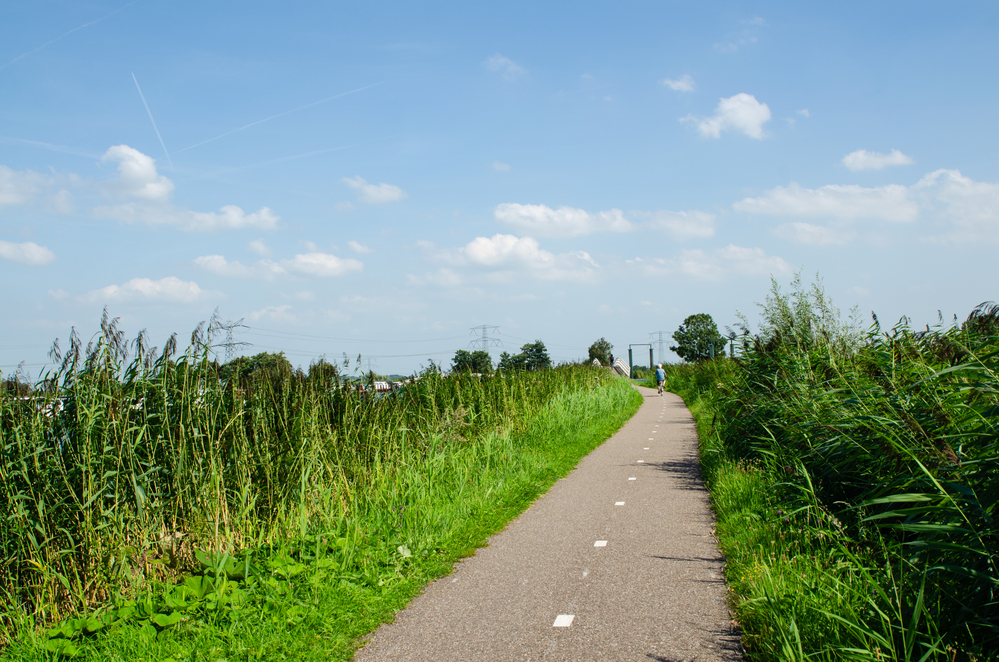
While city parks are perfect for a mini bike ride, the Netherlands also has many national parks with nature-filled views and fascinating wildlife to distract you from your tired legs. 🦌
2. Implement efficient hand signals
Biking in the Netherlands can be quite hard if you don’t know what you’re doing. But, as with cars, a good cyclist always signals to others if they’re about to make a turn.
Turning to the left? Simply point your left hand in that direction. To the right? Same thing.
Don’t be dramatic about it, though. There’s no need to completely stretch out your entire arm when signalling, as you’ll probably block another cyclist trying to speed past you. 🚴🏼♀️
In the Netherlands, people cycle on the right-hand side, so most of the time, you’ll be using your left hand to signal that you’re turning to the left side of the bike path.
TIP: If a cyclist glances over their shoulder in a particular direction, it likely means that they’re headed that way.
3. Put safety first
If these directions make you fear for your life, you can relax a bit. Bike lanes in the Netherlands are filled with markings and signals telling you where to go and when to give priority to other cyclists.
In this way, cycling feels way safer, and the rules are easy to keep track of. What also makes bike lanes very safe to ride on is the fact that they’re super smooth.
TIP: Those little bumps you see on bike lanes are a result of nearby tree roots growing underground. 🌳
4. Teach the kids young
Even though it may seem like reckless biking, Dutchies learn how to cycle when they’re little kids, so it becomes second nature when they get older.

Most Dutch kids aged between 10-12 end up taking a cycling exam (verkeersexamen) to get their wheels on the road.
5. Don’t wear bike helmets in the Netherlands
Speaking of safety, in the Netherlands, due to how safe Dutch cycle lanes are, it isn’t common for people to wear helmets or any type of bike protection for that matter.
READ MORE | Things that will get you fined while cycling in the Netherlands
Dutch people cycle with no helmet, no hands, and no protection whatsoever but always make it to their destination perfectly in one piece. 🤔
In this way, you never have to carry a helmet all day and can stroll around wearing nothing but some pants and a shirt — unless it’s during the wintertime. 🥶
6. Create roads where bikes are king
In some areas, cyclists aren’t limited to bike lanes but instead have priority over cars on the entire street!
These are called fietsstraaten (bicycle streets), and they’re in the same tinted red colour as normal bike lanes in the Netherlands — but instead, they take up the entire road.
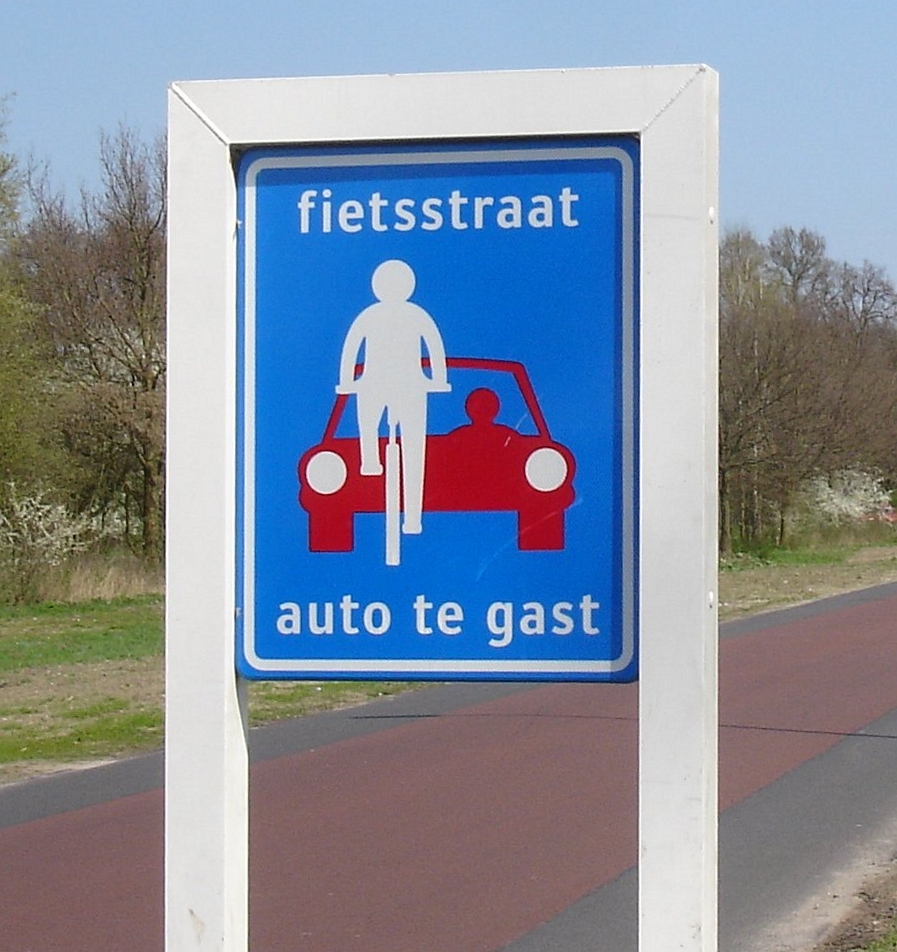
On these cycle routes, cars are considered guests, while cyclists are the main show. Thanks to these bicycle streets, it’s easier to cycle comfortably and safely over long distances.
7. Have smart traffic organisation
In the Netherlands, bicycles mostly have priority over cars when crossing through traffic. Of course, it’s always better to wait before crossing just in case you stumble upon a crazy driver. 🚙
The Dutch have also developed many traffic calming measures which make it a whole lot easier and safer for cyclists and pedestrians to get around.
8. Provide bike parking lots (which are absolutely huge)
In a country with more bikes than people, you need to factor this into infrastructure. And that’s exactly what the Dutch did.
There are loads of bike racks in the Netherlands, but you’ll find huge ones near university buildings and central stations. Some of them are underground too!
The only downside to massive bike parking lots in the Netherlands is that it may take you a good hour before finding your bike.
Tip: Taking a picture of where you’ve parked your bike can be useful if you forget where you put it.
9. Offer easy bike rentals
In the Netherlands, you don’t need to necessarily buy a bike and risk having it stolen just two weeks later. Instead, you can easily rent a bike via services such as Swapfiets and pay a monthly membership fee.
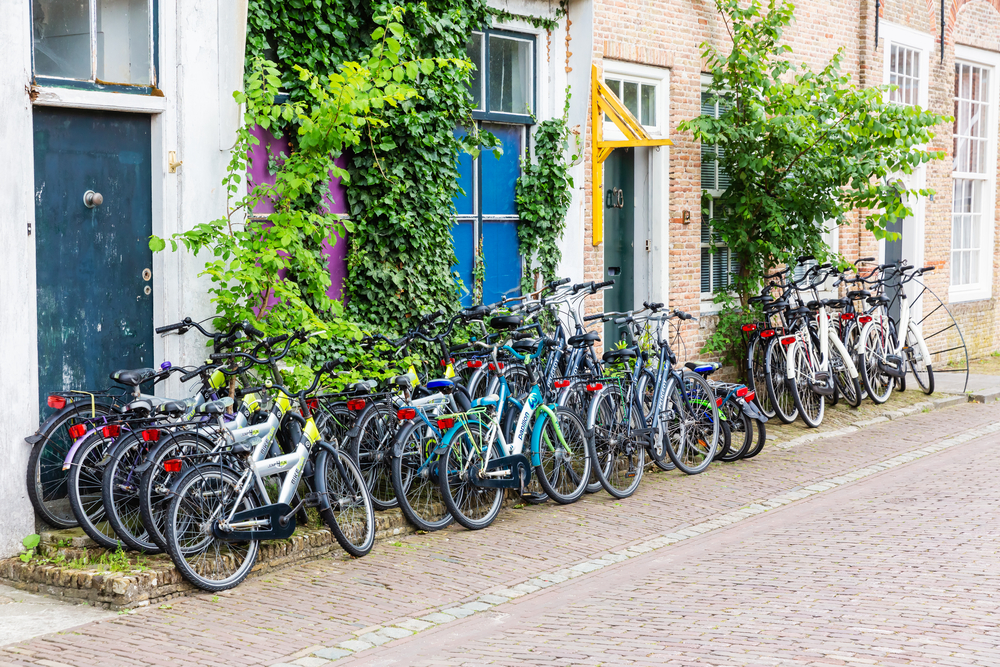
If you only need a bike for a day or when travelling to a different city, you can also get one with OV-fiets, a Dutch bike-sharing program. It’s exactly like public transport, but with a bike! 🤩
10. Build intersections with no traffic lights
With so many cyclists in the Netherlands, the country has to accommodate them with smooth and easy-roaming intersections. What better way to do so than having crossings with absolutely no rules? 🚦
These so-called shared spaces, like the one at Amsterdam Centraal, prove very successful.
While it may sound counterintuitive, having an intersection with no warnings makes both cyclists and pedestrians more aware when passing through, which results in way fewer accidents. That’s some interesting reverse psychology right there! 🚘
11. Create helpful and handy bike accessories
When you have thousands of cyclists, they need to have bikes that make their lives easier!
That’s why Dutch bikes are modified and adapted to suit several needs. For instance, many bikes have baby seats for the little ones or windbreakers for those chilly days. ❄️
READ MORE | How the Netherlands became a cycling country
You also have the (in)famous bakfiets, where you see a lot of Dutch kids sleeping in the cargo while their parents are in full cycling mode. Classic Dutchies!
Other honourable mentions include low-lying bikes for older people or bikes specially designed to hold umbrellas — we all know there’s plenty of rain in the lowlands. 🌂
12. Have multiple places to buy a bike
From flea markets to online marketplaces, and bike shops on almost every corner, you can find a bike pretty much anywhere in the Netherlands.
They can also be quite cheap if you buy them second-hand or go for a simpler model. 😉
That being said, do try to avoid any dodgy second-hand bike businesses because some get their bike stock by literally stealing them off the streets. So, make sure your bike is locked when you park it! 🔓
13. Allow bikes on trains
Want to travel between multiple cities in the Netherlands? The good news is that you can bring your bike with you on Dutch trains. 🚆
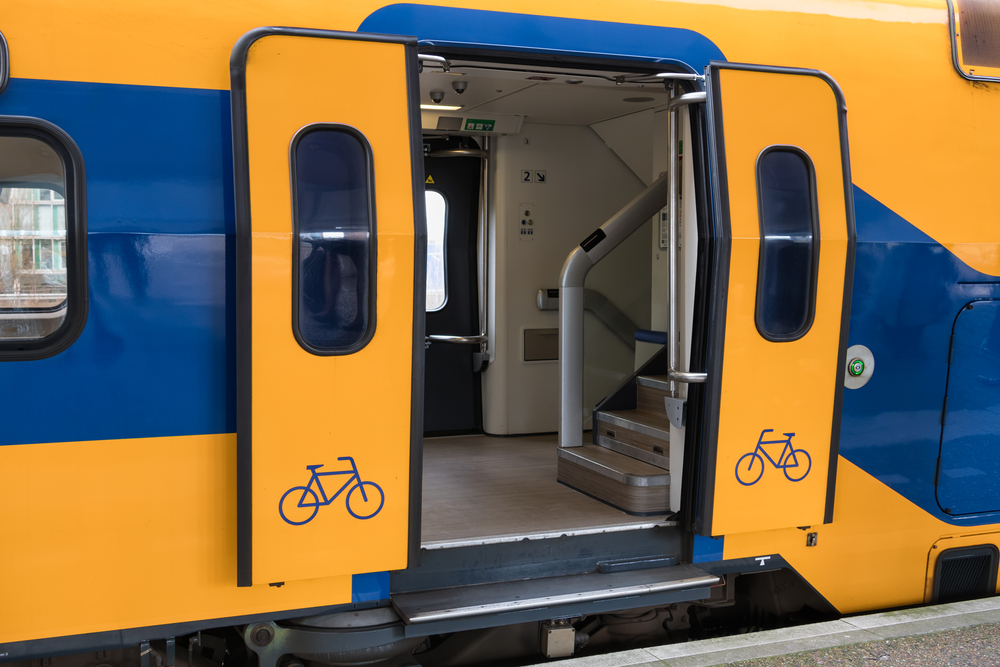
You’re allowed to have your bike on the train anytime between 6:30 AM and 6:30 PM on weekdays. But, on weekends and public holidays, you’re free to take it at any hour. Heel mooi!
14. Adapt their fashion sense to cycling
If you want to feel comfortable on a bike, you’ve got to dress comfortably! The Dutch are usually seen sporting practical clothing, which helps them not break that much of a sweat with all that cycling.
READ MORE | Dutch Quirk #19: Bike while holding hands
And Dutch culture encourages this! People rarely wear heels, and it’s also quite common to wear casual clothes at the office — unless you work at some fancy-schmancy law firm. 👨🏻💼
15. Create inter-city bike highways
The Dutch have made plenty of highways, especially for long travels on a bike. Thanks to this, you can cycle back and forth between cities in the Netherlands.
The RijnWaalpad, for example, is a fast cycling route between Arnhem and Nijmegen.
Bike connections like this make longer bike travels way more enjoyable by cutting down on traffic lights and avoiding any proximity to cars.
16. Have bike allowances at workplaces
While it’s clear that the Dutch government encourages bike usage, they take it one step further with employer-provided bike allowances.
Some companies offer to cover travel expenses for cyclists with a tax-free mileage allowance of up to €0.19 a kilometre, the same rate for those who drive a car to work.
And, since January 2020, many Dutch companies have simplified tax rules when it comes to using a company-owned bike for private travel. Fiets for life!
17. Provide bike bins
Picture this: you’re on your bike cycling at full speed, eating a banana and don’t plan on slowing down anytime soon.
You probably don’t want to hold onto that banana peel for much longer either. It’s a good thing that the Dutch have come up with an invention that only the Dutch need: special bins for cyclists. 🚲
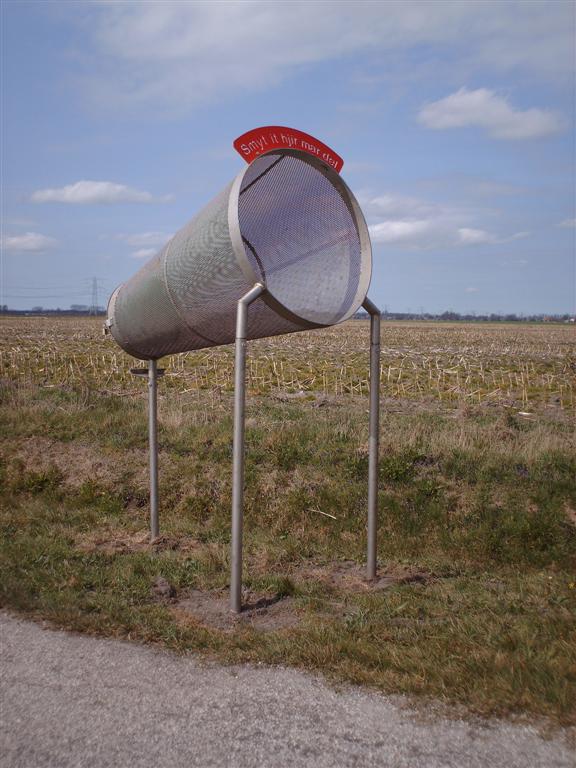
These bins/nets are specially designed so cyclists can throw their trash in there without having to step off their beloved two-wheelers. Maybe now’s a good time to start practising your aim!
18. Make simple bikes
If you’ve never been cycling in the Netherlands but want to try it out, don’t fret about all the different types of bicycles.
The Dutch provide really simple and low-weight bikes. Some even have a single speed, so you won’t get bothered by any complicated gears or extra wires that need constant maintenance. 🙄
Around here, these types of bikes are called Omafietsen (grandma bikes).
Whether you’re going to opt for a simple bike or one with twenty different speed settings, the Dutch will have exactly what you’re looking for.
19. Offer bike insurance
If your bike ever gets stolen in the Netherlands, you’ll most likely only need contents insurance since it already takes care of bike theft.
But if you want the whole shebang, the Netherlands provides bike insurance for when tragedy hits, such as bike damage and breakdown.
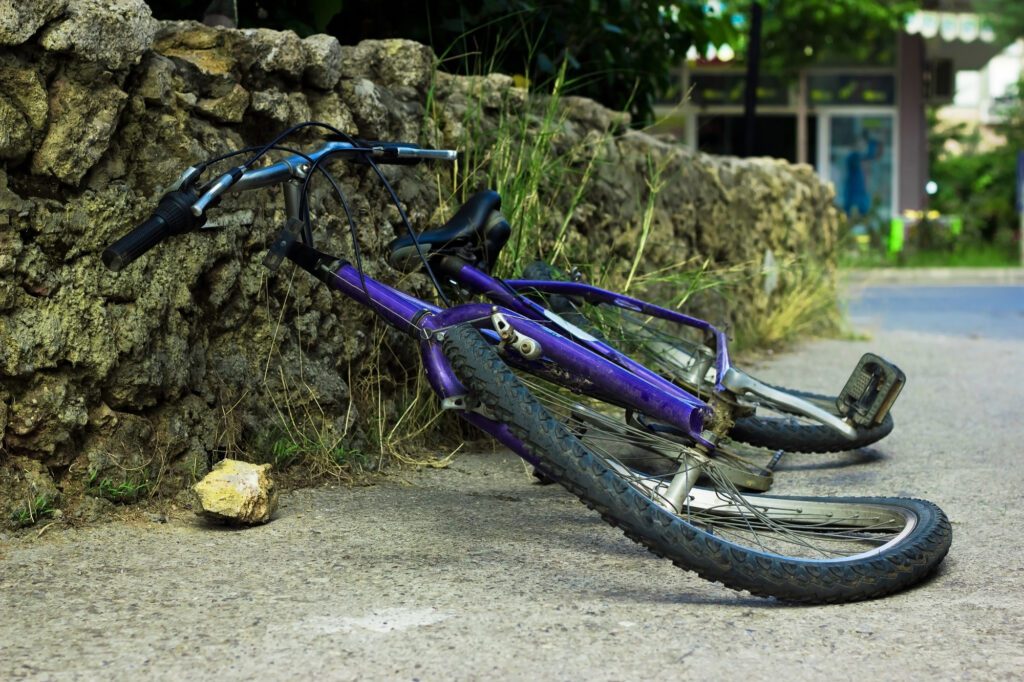
If your gears are ever in a rut, you can simply pay an annual fee — ranging from €30 to €60 — to get it all fixed up for you! 🚲
The Dutch have integrated cycling into their culture and made it easy and fun for everyone else to follow! So go ahead, it’s time to get those wheels on the red-tinted lanes and enjoy some smooth cycling.
Did we miss anything about how wonderful cycling is in the Netherlands? Tell us in the comments below!






When pulling my folding bike out of the ar trunk in NL, I got admiring comments from bystanders whereas in the USA I often get smirks and comments about my clown bike. In NL it’s just normal and in the USA it’s still a bit odd.